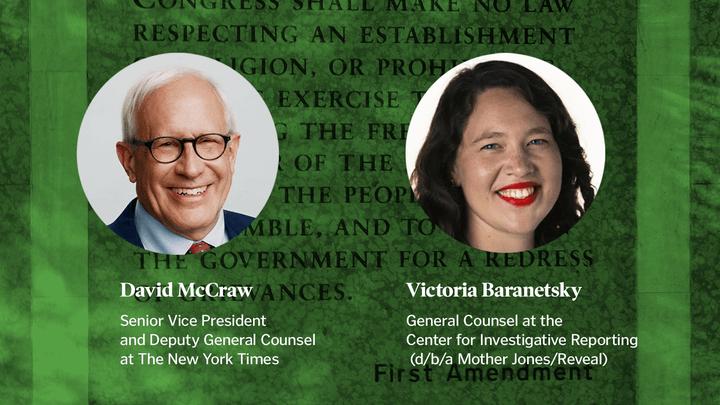Amanda Wills devoted much of the past year to coverage of the presidential election. So when she listened to voicemails left for CNN after Nov. 8, she expected to hear a lot of screaming from both sides.
Instead, she heard perspectives she’d never encountered before, ones that taught her not just about CNN’s audience, but about the country itself.
“For me, personally, as a journalist, it’s really, really opened my eyes,” said Wills, a senior editor with CNN Digital. “I think we forget how big our country is and how much of a patchwork it is.”
CNN isn’t the only news organization giving Americans a chance to talk, and listen, to each other after the election. The Guardian got people to swap Facebook feeds. The New York Times brought together a father and son who voted differently to talk it out. And The Washington Post showed Americans where they could find citizens nearby who voted differently from them.
Here’s a look at a few different ways journalists are working to pierce people’s filter bubbles.
CNN gave people a place to open up
In the days after the election, there were people celebrating, people who were in shock, people who were angry and people who were elated. CNN’s voicemail project gave them space to get it all out.
The idea for the project came from CNN’s Masuma Ahuja, who tried something similar for Valentine’s Day. Listening to those stories, as well as the voter stories, is an intimate experience because it’s not a conversation, Wills said. Someone made the choice to pick up the phone and share.
“It feels like they’re talking to you personally,” she said. “You’re listening to their side of the story.”
You can’t interrupt, you can’t correct, you can’t interject — something we don’t get a lot of post-election. And for the people leaving the messages, the experience seems to be therapeutic, Wills said.
“They really just wanted to be a united country again,” she said of callers, “and they have recognized that we are more divided than they’ve ever seen before. I heard it from people who were 18, and I heard it from people who were 80.”
CNN’s pulled a few stories out of the voicemails already, and they plan to keep mining them and keep collecting them through Inauguration Day. You can explore CNN’s ongoing voicemail project for yourself. So far, it has collected more than 11,000 voicemails from people on how they’re feeling about the election.
The Washington Post created an interactive map to your neighbors
When The Washington Post’s Philip Bump started playing with some post-election data, he realized the physical distance between people with opposite views wasn’t that great.
Last month, Bump created an interactive map that allows Americans to find the closest place that voted the opposite to where users live.
“There are places a short drive away from you right now that voted the exact opposite of where you live, for whatever reason,” Bump wrote. “And should you want to do your part to erase the divides in America, we made a tool that lets you find those places.”
Bringing America together: Find the closest place that voted the opposite of where you live.https://t.co/c3oNLd0fQk
— Washington Post (@washingtonpost) November 15, 2016
There are a lot of ways that news organizations can tell stories like this, Bump said, and he’d love to see a large ratio of storytelling at the Post and elsewhere come through media other than traditional stories. That means getting newsrooms, and not just the people they cover, to talk outside their circles, too.
“There is a lot of value to bringing into the process folks that don’t come from a traditional journalism background,” he said. “The more broad you can make the people who are thinking through how they tell these stories, the more diverse they will be.”
Upworthy targets empathy and shareability to break through those bubbles
Upworthy didn’t plan their Empathy Lab project for after the election on purpose, but the event in Madison Square Park was a chance to measure and share people’s empathy for one another and to show one of Upworthy’s missions — connecting people with work that engages them at a deep emotional level.
“We really do believe that those are the stories that pierce people’s filter bubbles,” said Amy O’Leary, chief story officer at Upworthy.
That doesn’t mean feel-good puppy videos, she added, but work that has a larger meaning, such as families seeing each other across the border or college students supporting their Muslim classmates.
At Upworthy, they’re thinking not just about the news of the moment, not just about what feels good, she said, “we are really looking at dynamics of social sharing, of what activates their empathy and what motivates them to share a video or take further action.”
The pop-up Empathy Lab invited people to watch a story while software mapped their faces to analyze their emotional response. At the end, they got an empathy score to show how deeply the video caused the viewers to respond.
“It put a very concrete, tangible face to the kind of work we do every day,” O’Leary said.
The election outcome and aftermath was a big shock for a lot of people, and among things to get the blame was social media that makes it easy for people to disconnect with views they don’t share. Upworthy’s focus on human stories offers a glimpse into other people’s lives. And the deep emotional response they’re going for makes people want to share. That leads to breaking through those bubbles. And that, O’Leary said, is fundamentally a good thing for society.







